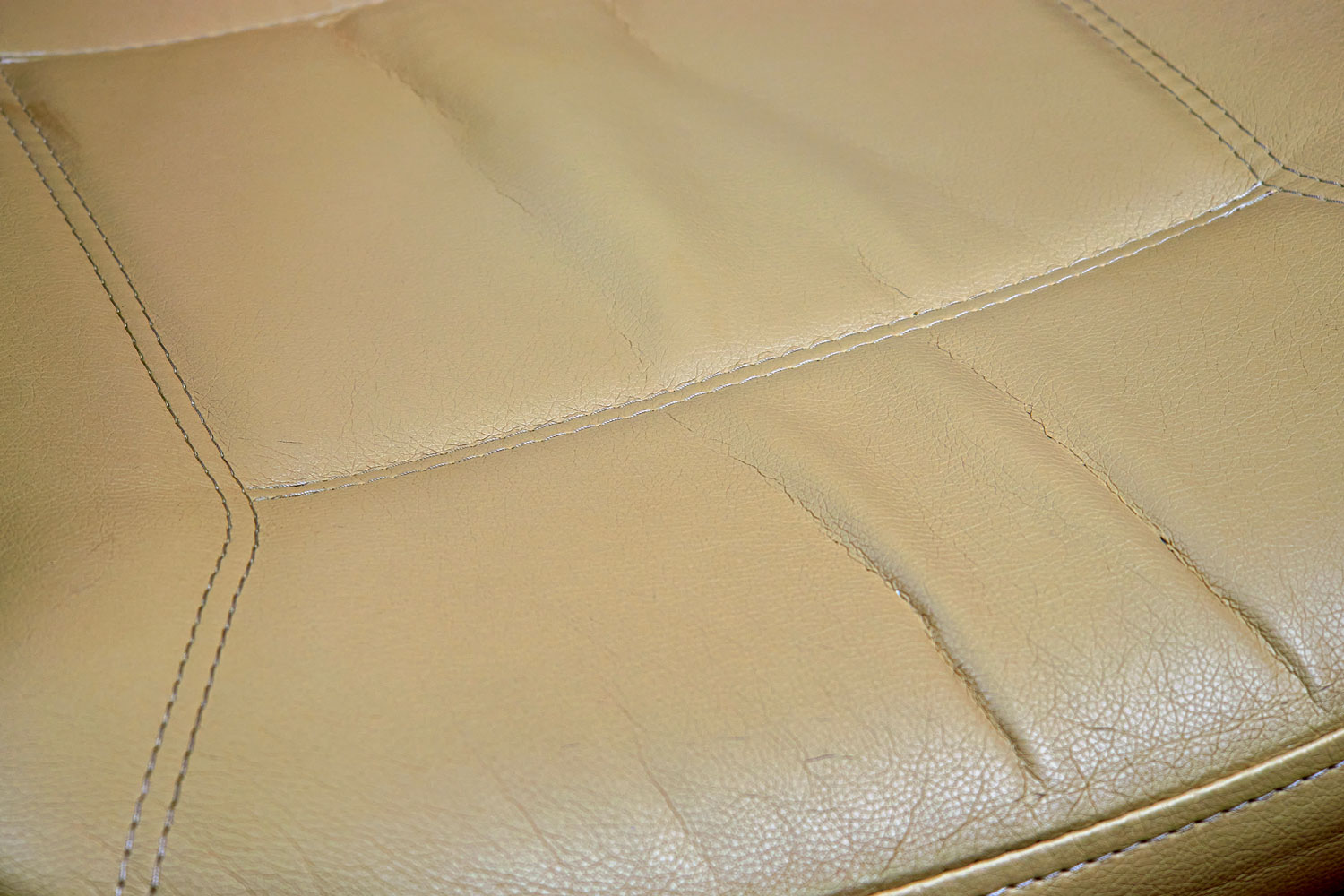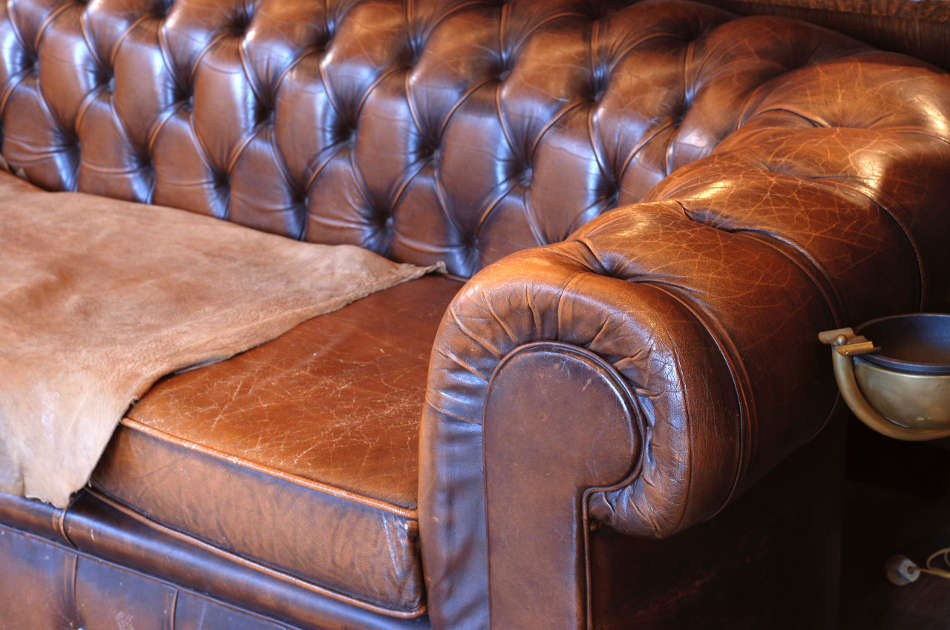Leather sofas are a timeless and elegant addition to any living room. But over time, they may start showing signs of wear and tear, such as cracks in the leather. This can be a major eyesore and may make you wonder if your beloved leather sofa can be repaired. The good news is that with the right techniques, cracked leather sofas can be fixed and restored to their former glory. In this article, we will discuss how to repair a cracked leather sofa and give you some useful tips to make the process easier. Leather Sofa Repair: How to Fix Cracked Leather Sofa
Before we dive into the repair process, it's important to understand what causes leather sofas to crack. Exposure to sunlight, heat, and humidity can dry out the natural oils in leather, making it more susceptible to cracking. Poor maintenance, such as not regularly cleaning and conditioning the leather, can also lead to cracks. But don't worry, even if your leather sofa is already showing signs of cracking, it can still be repaired. Here's how: How to Repair a Cracked Leather Sofa
The first step in repairing a cracked leather sofa is to clean the affected area. Use a leather cleaner to gently remove any dirt, dust, and grime from the surface of the leather. Make sure to follow the instructions on the cleaner and use a soft cloth to avoid damaging the leather. Once the area is clean, let it dry completely before moving on to the next step. Clean the Affected Area
After the leather is clean and dry, it's time to apply a high-quality leather conditioner. This will help to restore the natural oils in the leather and make it more pliable, reducing the appearance of the cracks. Use a soft cloth to apply the conditioner in a circular motion, and make sure to cover the entire affected area. Let it sit for a few hours or overnight to allow the conditioner to penetrate the leather. Apply Leather Conditioner
Once the leather is conditioned, it's time to fill in the cracks. You can use a leather filler or a mixture of glue and leather shavings to fill in the cracks and make them less noticeable. Apply the filler to the cracks using a small spatula or your fingers, making sure to smooth it out evenly. Let it dry completely before moving on to the next step. Fill in the Cracks
After the filler has dried, use fine-grit sandpaper to gently sand the affected area. This will help to smooth out any rough edges and create a more even surface. Be gentle and don't apply too much pressure, as you don't want to damage the leather. Once you're satisfied with the smoothness, wipe away any excess dust with a soft cloth. Sand and Smooth
If your leather sofa is a different color than the filler, you may need to touch up the area with leather dye. This will help to blend the filler in with the rest of the sofa and make the repair less noticeable. Make sure to choose a dye that matches the color of your leather and follow the instructions carefully. Once the dye has dried, use a leather conditioner to protect the newly dyed area. Touch Up with Leather Dye
Repairing a cracked leather sofa may seem like a daunting task, but with these tips, the process can be much easier and more effective: Tips for Repairing a Cracked Leather Sofa
As you can see, cracked leather can be repaired with the right techniques and products. However, it's important to note that the repair may not be 100% perfect and some cracks may still be visible. But with proper care and maintenance, you can prevent further damage and prolong the life of your leather sofa. Can Cracked Leather Be Repaired?
If the cracks on your leather sofa are concentrated on the cushions, the process will be slightly different. You will need to remove the cushion cover and repair the cracks on the underside of the leather. Once the repair is complete, you can reattach the cover and follow the steps mentioned above to touch up the color and protect the leather. How to Fix a Cracked Leather Sofa Cushion
The Process of Repairing a Cracked Leather Sofa

Understanding the Cause of Cracks
 When it comes to leather furniture, cracks can be a common issue, especially with regular use and wear. However, before attempting to repair a cracked leather sofa, it is important to understand the cause of the cracks.
Dryness and lack of moisture are the main culprits for causing cracks on leather furniture
. This is because leather is a natural material that needs proper care and maintenance to stay in good condition.
When it comes to leather furniture, cracks can be a common issue, especially with regular use and wear. However, before attempting to repair a cracked leather sofa, it is important to understand the cause of the cracks.
Dryness and lack of moisture are the main culprits for causing cracks on leather furniture
. This is because leather is a natural material that needs proper care and maintenance to stay in good condition.
Assessing the Damage
 The first step in repairing a cracked leather sofa is to thoroughly assess the damage
. This includes closely examining the cracks and determining their size and severity.
Small, superficial cracks can easily be fixed with simple at-home solutions, while larger, deeper cracks may require professional help
. It is also important to take note of any other damage such as tears or scratches on the sofa.
The first step in repairing a cracked leather sofa is to thoroughly assess the damage
. This includes closely examining the cracks and determining their size and severity.
Small, superficial cracks can easily be fixed with simple at-home solutions, while larger, deeper cracks may require professional help
. It is also important to take note of any other damage such as tears or scratches on the sofa.
Cleaning and Preparing the Leather
 Before attempting to repair the cracks, it is essential to clean and prepare the leather thoroughly
. This involves using a mild leather cleaner to remove any dirt, debris, or oils that may have built up on the surface. Once the leather is clean, it is important to
apply a leather conditioner to moisturize and soften the leather
. This will help prevent future cracks and make the repair process easier.
Before attempting to repair the cracks, it is essential to clean and prepare the leather thoroughly
. This involves using a mild leather cleaner to remove any dirt, debris, or oils that may have built up on the surface. Once the leather is clean, it is important to
apply a leather conditioner to moisturize and soften the leather
. This will help prevent future cracks and make the repair process easier.
Using Leather Filler and Leather Dye
 If the cracks on the sofa are small, a leather filler can be used to fill in the cracks and smooth out the surface
. This can be easily done at home using a leather repair kit. Once the filler is dry, it is important to
match the color of the leather using a leather dye
. This will ensure that the repaired area blends in seamlessly with the rest of the sofa.
If the cracks on the sofa are small, a leather filler can be used to fill in the cracks and smooth out the surface
. This can be easily done at home using a leather repair kit. Once the filler is dry, it is important to
match the color of the leather using a leather dye
. This will ensure that the repaired area blends in seamlessly with the rest of the sofa.
Seeking Professional Help
 If the cracks on the sofa are large or deep, it is best to seek professional help
. A leather repair specialist will have the necessary tools and expertise to repair the cracks and restore your sofa to its original condition. They may also be able to address any other damage on the sofa that you may have missed.
If the cracks on the sofa are large or deep, it is best to seek professional help
. A leather repair specialist will have the necessary tools and expertise to repair the cracks and restore your sofa to its original condition. They may also be able to address any other damage on the sofa that you may have missed.
Preventing Future Cracks
 To prevent future cracks on your leather sofa, it is essential to properly care for and maintain it
. This includes regularly cleaning and conditioning the leather, as well as avoiding harsh chemicals and excessive heat or sunlight. Investing in a good leather protector can also help preserve the quality of your sofa.
In conclusion, a cracked leather sofa can be repaired with the right tools and techniques. By understanding the cause of cracks, assessing the damage, and properly preparing and repairing the leather, you can restore your sofa to its former glory. However, for larger or more severe cracks, it is best to seek professional help. With proper care and maintenance, you can prevent future cracks and enjoy your beautiful leather sofa for years to come.
To prevent future cracks on your leather sofa, it is essential to properly care for and maintain it
. This includes regularly cleaning and conditioning the leather, as well as avoiding harsh chemicals and excessive heat or sunlight. Investing in a good leather protector can also help preserve the quality of your sofa.
In conclusion, a cracked leather sofa can be repaired with the right tools and techniques. By understanding the cause of cracks, assessing the damage, and properly preparing and repairing the leather, you can restore your sofa to its former glory. However, for larger or more severe cracks, it is best to seek professional help. With proper care and maintenance, you can prevent future cracks and enjoy your beautiful leather sofa for years to come.










































































